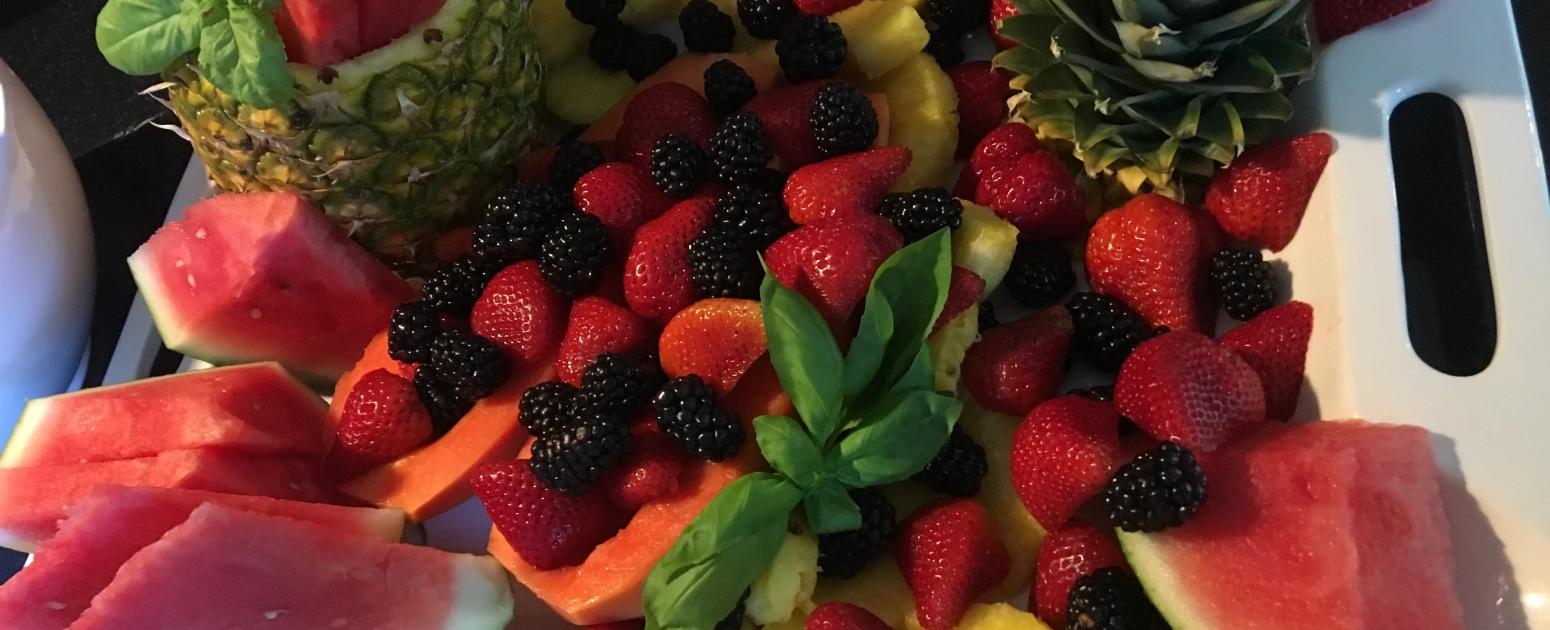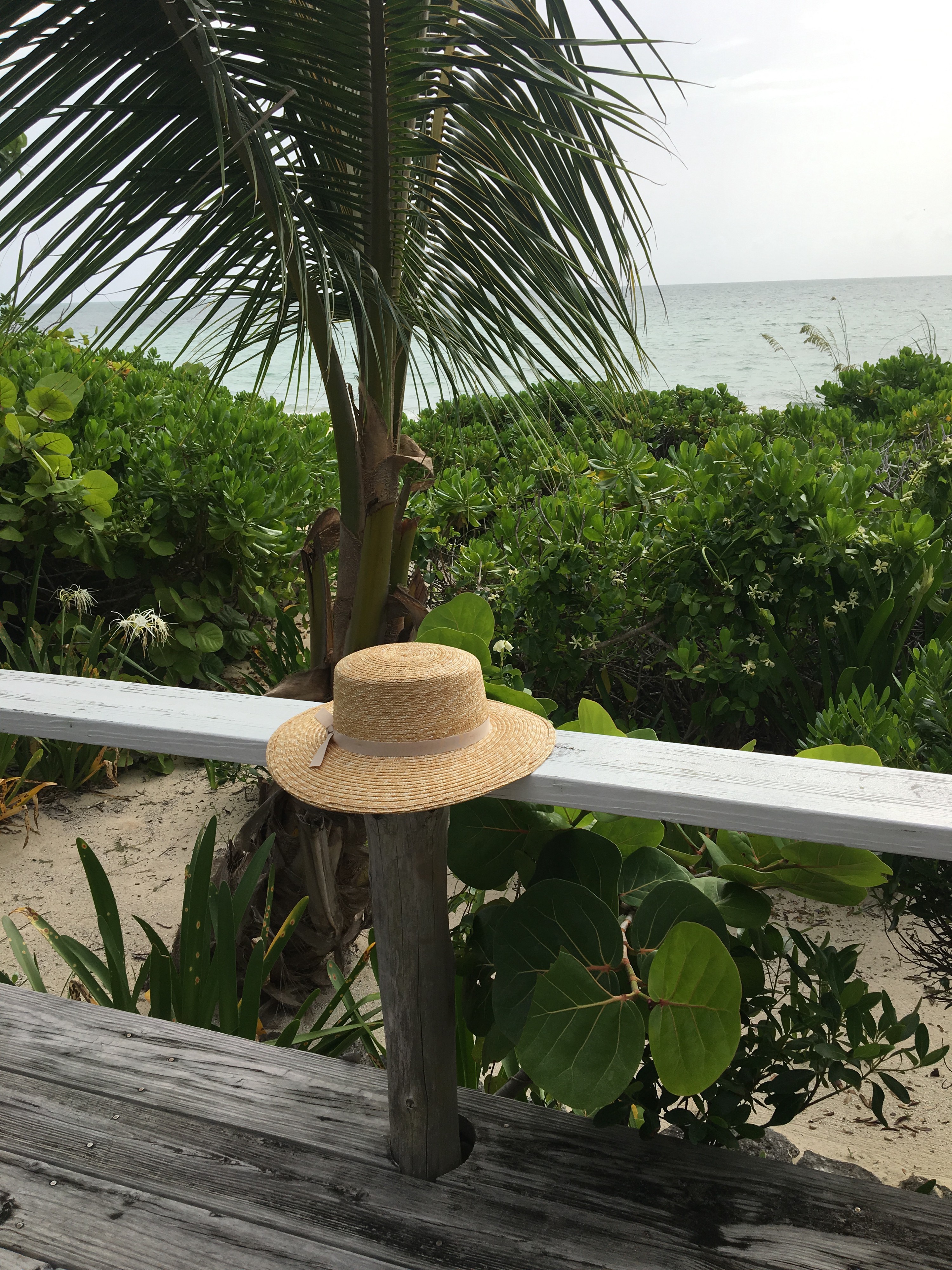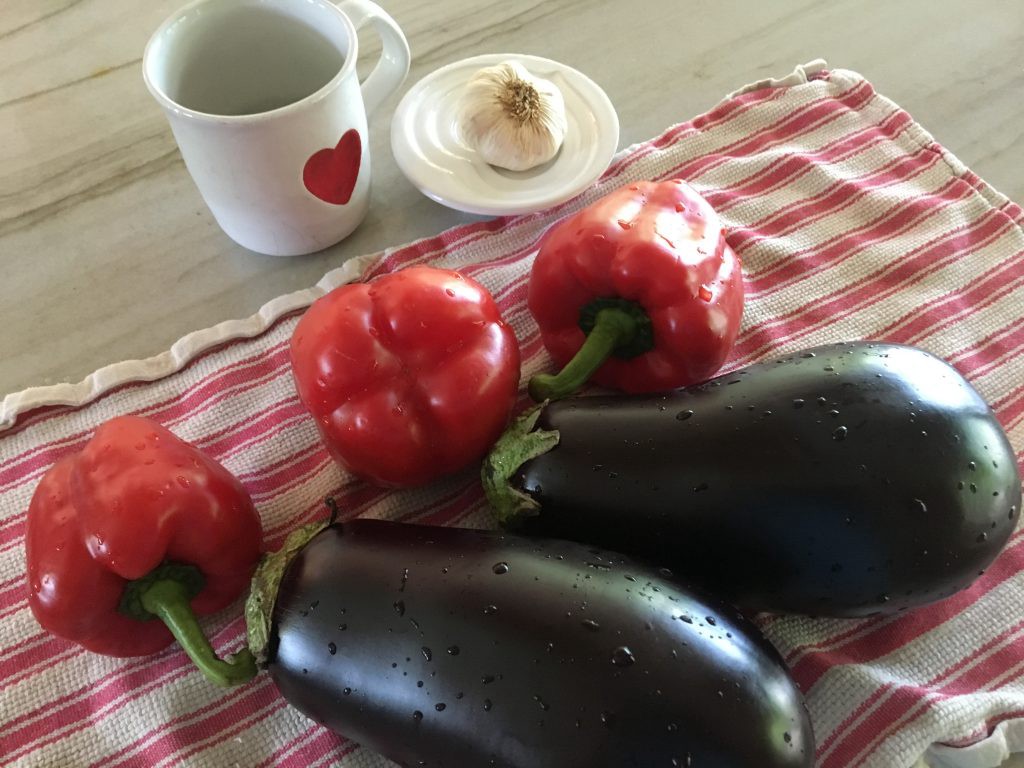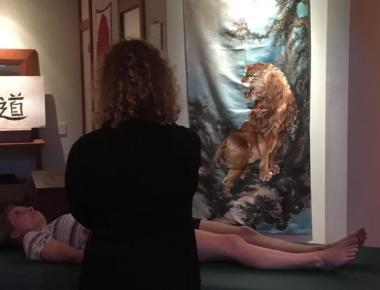Table Of Contents

Sustainable Vitality.
Welcome to Part 3!
Since for most of us it takes longer than one week to try out, create and establish new habits, it is appropriate, of course, to give it more time: based on feedback, one week is not enough for most. So, give this process more time, if you need to do so. The key is not to undermine your efforts and results with rushing, pressure or stress. Do what you can but put your best foot forward.
The title now reflects this approach by reading “part 1” and “part 2” instead of numbering the weeks. And where I might say a “week” in the text, it could be a few days for one person and a month or more for another. Work with the time frame that is appropriate for you but remain consistent and dedicated and keep introducing new elements — do not lose the momentum and remain dynamic and dedicated.
If you followed Part 1 and Part 2, you must have tried lots of vegetable and fruit dishes, experimented with adding legumes and healthy grains to your diet, and got in a flow of what you enjoy the most and what works and when: maybe fruit with or without oats for breakfast, colorful salad and green soup for lunch, and vegetable stew with wild rice for dinner, and, of course, delicious treats – fruits and teas. Mantras and visualizations from Parts 1 and 2 have created a new constructive positive self-talk and self-training that is replacing any negative self-talk and lack of motivation.
Qigong breathing practices are laying a foundation for habituating deep slow abdominal breath that is a true switch to parasympathetic state of our autonomic nervous system – a healing stress-free state, as opposed to sympathetic state or “fight or flight.” Grounding qigong meditation creates a foundation for further skill building: for example, (1) connecting with the Earth, feeling its Yin energy and guiding it to you and through you; (2) connecting and channeling the Yang energy of the Universe and its celestial bodies, an advanced qigong practice; (3) setting intention properly for your qigong practices, a skill that takes time and patience to build; among others. These are studied with a qigong practitioner who will coach you step by step and guide your progress. This can be a life-long journey.

Thinking vs. Feeling
In Period 3 we will explore our relationship with food, eating and nourishment. We think a great deal about the food that we eat, as individuals and as groups of people: we rationalize what we like and dislike, we make up menus, we make up diets, we nurture and celebrate with food… Some of our food-related thinking is positive and constructive but some are suboptimal. The good news is that we create our thoughts, we can control them, and therefore, we can change them. But if we can choose what we think, we cannot easily choose what we feel. We either feel joy or we do not. We can fake it but we know the power of the true feeling. Although unhealthy, hiding and camouflaging emotions works temporarily until we are ready to acknowledge and face the real feeling. And feelings can be rational and happy or otherwise.
Food and eating is a huge cultural phenomenon. We eat several times per day. We associate family members with the food that they make or like. We entertain ourselves and others with food. Cooking is an art form. Dieting is a multi-billion-dollar industry. Eating a certain way is bordering a cult. Food influences our evolution, history and environment. We cannot live without food.
This is a lot to consider when you take a bite but let’s try:
What do you think vs. feel about eating in general? And about eating your favorite foods? What are your favorite foods and why? What are the circumstance when you nourish yourself with food vs. indulge and abuse? How skillful are you at nourishing yourself with food? What are your principles? What is the state and prognosis for your health? What emotions get on the way to pure and true nourishment? Is it seeking for comfort, love, relaxation, reward, punishment, social acceptance, someone’s approval, good looks, better performance? The list can go on. Is the link between the feelings and the food healthy and sustainable in the long run? Or does it stir up the negative, and you would rather change it or let it go? Meditate on these. Once we are ready and willing to address our eating and lifestyle in order to fix or improve or protect our health, we inevitably become good at evaluating, isolating and hopefully changing the behaviors that contradict this goal. This process is easy if all we have to do is mechanically replace bad habits with good ones. However, if a bad habit is entangled with some deep emotion(s), it may be harder to make yourself change your mind and start acting in a new way without ”nostalgic relapses.”
The Role of Subconscious Mind
Let’s consider a simple case in which someone can easily and quickly make a change in her eating patterns because she realized there have been a mistakes due to, let’s say, misinformation, lack of knowledge or being unaware of better choices and alternatives: no big deal; know better now; no attachment; and glad to have made the change and adopt a new behavior. Easy? Yes. Often? No.
Unfortunately, in most cases, things do not work out so simply and easily. Most of us have strong attachments to eating patterns and food choices that go deep into our subconscious. Surprisingly, only 5% of our activities is directed and controlled by our conscious mind with its logical reasoning: this is not so good or safe for me, so logically, I will not do this. Sometimes we rely on our willpower and discipline to make the proper decision that will move us closer to a good choice or the change that we want.
The remaining 95% of our behavior is directed by our subconscious mind that has been slowly and subtly but surely wired not only during our lifetime since childhood (by caretakers and environment) but also over the course of the evolution of humankind. Most of this wiring is essential for our survival, well-being and flourishment. But not all of it may be universally beneficial. Some of these wired constructs may be someone else’s ideas of what’s right and wrong, and may not apply to you in certain instances or ever.
Here are some examples. Catherine’s caring parents would endlessly teach her to finish all the food on her plate, eat all that they give her and be grateful, and make her lunch sandwich with white bread, thick layer of butter and lots of salami. This makes sense to her parents who grew up during World War II and post-war era, and it makes them genuinely upset when she is not hungry enough to eat a lot and that she prefers sandwiches with black bread and cucumbers or tomatoes and no butter at all. Robert’s parents love mayonnaise and add it to many dishes – a bad idea to start with, aside from making Robert eat them by telling him that it’s sour cream. Easily fooled and out of duty, the boy would eat that food with mayo and throw up, and what’s worse, he would feel guilty for not enjoying his parents’ cooking the way they do. As a result, both Catherine and Robert got deeply wired with constructs that do not serve their health and best interests: Catherine overeats for the sake of not wasting any “precious” food; and Robert overindulges on the food that he himself chooses to suppress the guilt and to pacify the feeling that he is in control now, and will eat what he likes without being forced and getting sick.

Rewiring Subconscious
These types of behaviors are deeply wired into people’s subconsciousness, and it is hard to be instantly successful at de-activating these programs and adopting new habits. Initially, the new habits require substantial effort until the new neuropaths are created in the brain. With repeated use – repeating the new habits over and again – the path becomes more and more build in, and new behavior becomes essentially automatic, natural and easy.
Yes, very often we can be successful at change using this method. And yes, it does not always work. Subconscious wiring can resist vigorously. Sometimes, we work really hard at creating new behaviors but in the long run discover that the change is not permanent, and hard-earned “results” go away. Fortunately, there are methods to address our resisting subconsciousness. Alternative healing has a few to offer. My favorite ones are based on traditional Chinese medicine and utilize vibrational energy to dissolve the negative charge around the issues and experiences that sit deeply in our subconscious mind, and repeatedly take control despite the fact that they do not serve our highest best purpose.
Qigong offers meditations and protocols that are very productive in this type of work. Some of them are better performed with a practitioner, and others can be learned from a practitioner and subsequently performed independently. If you are interested in these, please, contact me or another qualified qigong practitioner in your area. Below, I offer the Old Man qigong meditation that is very effective in releasing negative emotions.
Another method that I like is Emotional Freedom Technique (EFT). It is also extremely useful and is very easy to learn and perform even without a coach. My favorite resources for EFT are Jane and Phillip Montrose at gettingthru.org and Jon Gabriel at thegabrielmethod.com. Montroses are exceptional experts on EFT for any purpose or goal. Jon is an expert on permanent weight loss, and has successfully used EFT, meditations and visualizations for this purpose.
My hope is that if you discover the hidden root cause of your suboptimal relationship with food, eating and nourishment, you will turn to some of these resources, find help and eliminate that cause. Teaching these methods is beyond the scope of this article as there are volumes written about them and many experts teach classes and help people achieve their goals and acquire the skills to continue working on their own. And as always, I would be happy to help out with both qigong and EFT methods.
Consider Fasting
As you are working on creating some wonderful changes in your life, improving your skills in nourishing yourself, and gaining more and more vitality, you may want to consider fasting. Fasting has always been a part of human experience either for spiritual reasons or simply due to living in harmony with nature, with the latter being severely disturbed by industrialization of food supply. There are many ways to fast and plenty of information on how to do it. You can fast weekly for one day or more. You can adopt fasting-like diets during certain periods of the year. You can fast for 12 or 14 or 16 hours within 24-hour period on certain days of the week.
There is a lot to choose from and you should carefully evaluate what may work for you. More importantly, you need to know that there is substantial science behind the fasting traditions and follow the chosen method properly. If you have a health condition or are taking medications, do not jump into this without consulting a physician. Fasting can be dangerous in certain situations (e.g., with diabetes).
My recent favorite book on fasting is by Valter Longo, the longevity expert that I mentioned earlier, and the author of The Longevity Diet book. He explains some very important aspects of fasting and provides information on how fasting can be adapted for people battling certain health issues. He also offers a comprehensive guide on how to fast using his method which is based on extensive research. He offers a serious word of caution that fasting schedules and protocols are not always as random as they sometimes seem. He lays out his recommendations very clearly and encourages people to give it a try, once you’ve been cleared to do so by your doctor, and in some cases under physician’s close monitoring and supervision, or even in a clinic.
Besides multiple health benefits, fasting changes your relationship with food and eating for the best. It helps you to get rid of cravings. It rejuvenates your taste buds and therefore food preferences. You begin to love the foods that actually make you healthier and give you energy and vitality. So, your old suboptimal food choices are no longer a consideration. Your bad habits just simply disappear making it so much easier for you to execute your new way of nurturing yourself.

Qigong Exercise: “The Old Man Searching for the Reflection of the Moon at the Bottom of the Tide Pool”
I am certain that you now know how to compose your own mantras, visualize your goals and successes, and construct your own new habits and incorporate cues, routines and rewards. If you practiced the qigong meditations from Parts 1 and 2, you must be a better meditator now, too. In this Part 3, I offer a more advanced qigong meditation that is excellent for acknowledging and releasing suppressed emotions. It incorporates visualization, movement, sounds and intention setting. If you follow the detailed instructions below, you will learn this meditation in no time. You will also learn healing sounds that create certain vibrations and assist in the cleansing, as explained below.
“The Old Man Searching for the Reflection of the Moon at the Bottom of the Tide Pool” is a qigong exercise that is usually prescribed to patients who are disconnected from their own internal feelings and are energetically shut down, as stated by Professor Jerry Alan Johnson Ph.D., D.T.C.M. (China) in The Secret Teachings of Chinese Energetic Medicine textbook, which is the source of the description of this exercise as follows.
One qigong doctor would say “You can only heal what you feel,” and prescribe the Old Man exercise in order to assist a patient in purging the suppressed emotions and energetic structures that prevent a person from energetically experience their body in a healthy way. Every physical illness has an emotional and energetic root. Once a patient performs this exercise for a while (several weeks), he can break down the emotional walls of resistance that prevented him from feeling their body, allowing for further work of finding and eliminating the root of the problem. It is also important to address the patient’s toxic state of mind that is responsible for keeping the old toxic stories within tissues of the body.
The origin of this exercise is a Chinese legend about a poor old man who went to look for sea crustaceans for feed his family. It was a full moon night, and he took the moon’s reflection in the water for a giant pearl. As he tried to pick it up in vain, the water made sound “Sh-sh-sh.” Then, as the old man gazed at the full moon in the sky he said “Ha-a-a,” realizing that he was trying to grab the moon’s reflection. He was disappointed and said “Whoo-o-h” in despair. Hence, the three sounds that are used in the Old Man exercise.
The exercise begins and ends by standing in a posture called “Wuji” – a posture that has no extremes and allows for the open energy flow through the body. The Wuji posture description is as follows: stand with your feet approximately shoulder-width apart; relax your knees, microscopically bend them, and do not lock them; roll the tip of the sacrum under to relax and lengthen the spine; relax, drop and spread the shoulders to slightly widen the back; slightly tuck under your chin as if the top of your head is slightly pulled up and the back of your neck is elongated; distribute your weight evenly between the balls of your feet and the heels, and do not lean forward or backward.

Below is the description of the components of this exercise:
Preparation: Stand in Wuji posture. Inhale and separate and stretch both of your arms to the sides of the body. While inhaling, imagine Divine Healing Light (DHL) filling your Lungs. Purging the Lungs: lean over forward and begin to exhale, making the “Sh-sh-sh” sound. Arms fall down and swing from side to side, crisscrossing each other as you continue to make the purging sound. During this exhale, imagine the toxic Qi is pouring out each Lung. Feel toxic Qi pouring down each arm, away from the body, deep into the Earth. Inhale: On the inhale, straighten your body up and slowly raise both arms above your head. While inhaling, look up into the Heavens and imagine DHL filling your whole chest including your Heart, Liver and Spleen. Purging the Heart: Now exhale HALF of your breath and slowly bring both of your hands down in the front to shoulder level. As your hands descend, form two soft hollow fists as if you are grasping two delicate sparrows. Meanwhile, focus on the center of your chest, imagine that all toxic energy is being released from your Heart, while simultaneously pronouncing the sound “Ha-a-a.” Purging the Liver, the Spleen and the area of solar plexus: Then, exhale the 2nd HALF of your breath while releasing toxic Qi from the Liver and Spleen and making the “Whoo-o-o” sound. While exhaling, move both of your hands from the shoulders down to your hips, while still keeping both fists soft and hollow. You must repeat steps 3, 4 and 5 for a total of three times – that is exhaling the “Ha” and the “Who” sounds for three breaths. This equals one set of the Old Man exercise. Repeat this exercise 18-36 times. Ending: end in a quiescent Wuji standing meditation posture. In short:
Inhale, arms to the sides, DHL pours into Lungs Exhale and bend down and swing arms while sounding “Sh-sh-sh” to purge Lungs Inhale, arms up, DHL pours into Heart, Liver and Spleen 1st ½ of exhale, fists to shoulders while sounding “Ha-a-a” to purge Heart 2nd ½ of exhale, fists to hips while sounding “Who-o-o” to purge Liver, Spleen, and the area of solar plexus Inhale, arms up, DHL pours into Heart, Liver and Spleen 1st ½ of exhale, fists to shoulders while sounding “Ha-a-a” to purge Heart 2nd ½ of exhale, fists to hips while sounding “Who-o-o” to purge Liver, Spleen, and the area of solar plexus Inhale, arms up, DHL pours into Heart, Liver and Spleen 1st ½ of exhale, fists to shoulders while sounding “Ha-a-a” to purge Heart 2nd ½ of exhale, fists to hips while sounding “Who-o-o” to purge Liver, Spleen, and the area of solar plexus Repeat these 11 steps 18-36 times, and end in Wuji.
Initially, as you are learning the mechanics of the Old Man exercise, it may be challenging to stay in a meditative mode. But once you are comfortable with the movements, breathing, sounds and intentions, it will be increasingly easier to purge your organs, and importantly, learn to connect with the DHL, the most healing energy of all, and guide it to you and through you. Be patient working on this skill. You will know when it comes to you. Once you learn the routine of the Old Man exercise, you should practice for 15-20 minutes at a time. It is safe to practice on daily basis, especially, if you are dealing with some strong emotions of sadness, grief, anger, worry and alike. It can also be practiced as needed.
You may watch the YouTube video of the Old Man qigong exercise provided by Dr. Jason Gordon of alchemicalcourtyard.com by clicking HERE.
Please, do not hesitate to contact me with questions and feedback.
I wish you strong resolve and robust vitality.
Enjoy! Eat lots of plants and practice qigong regularly!







